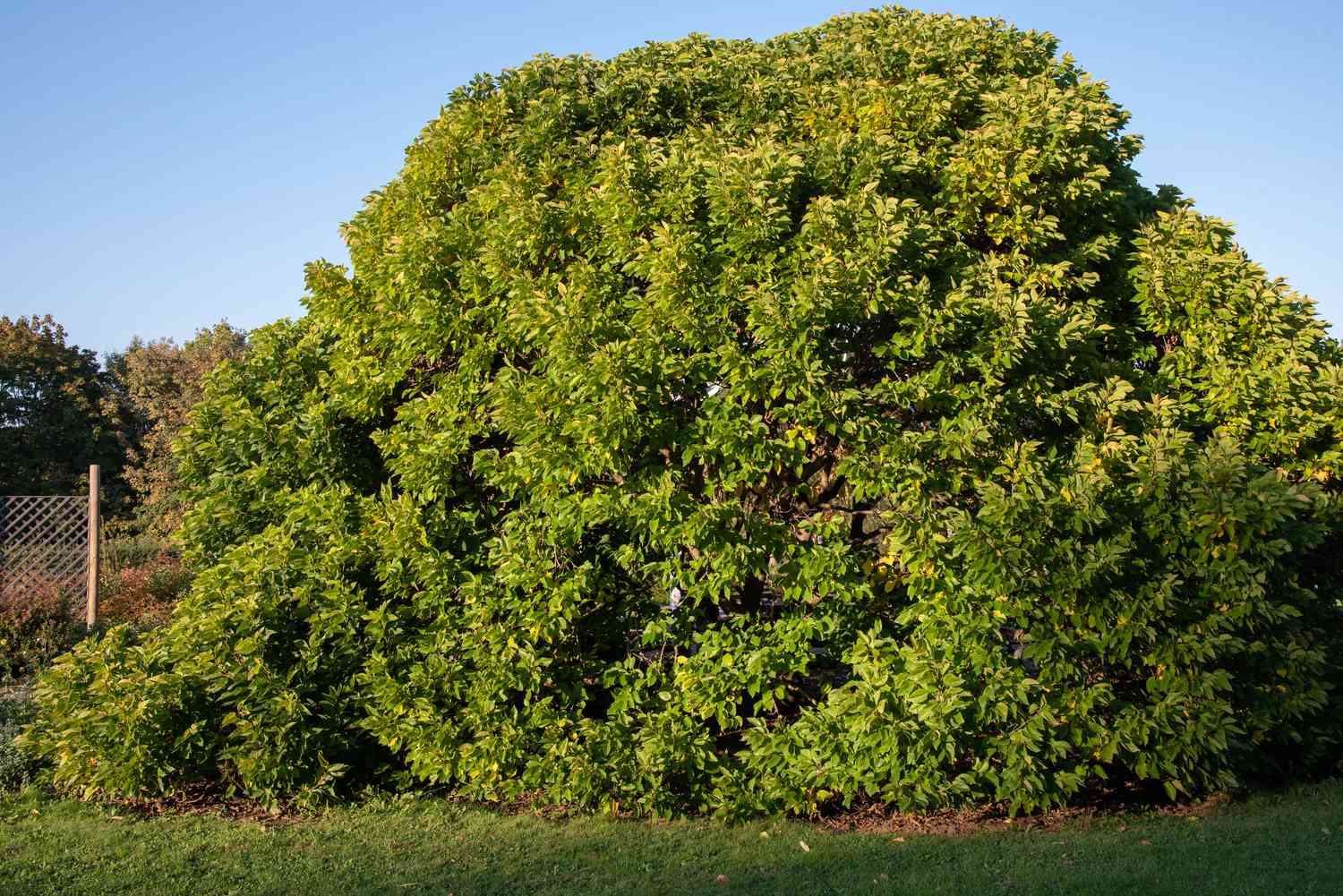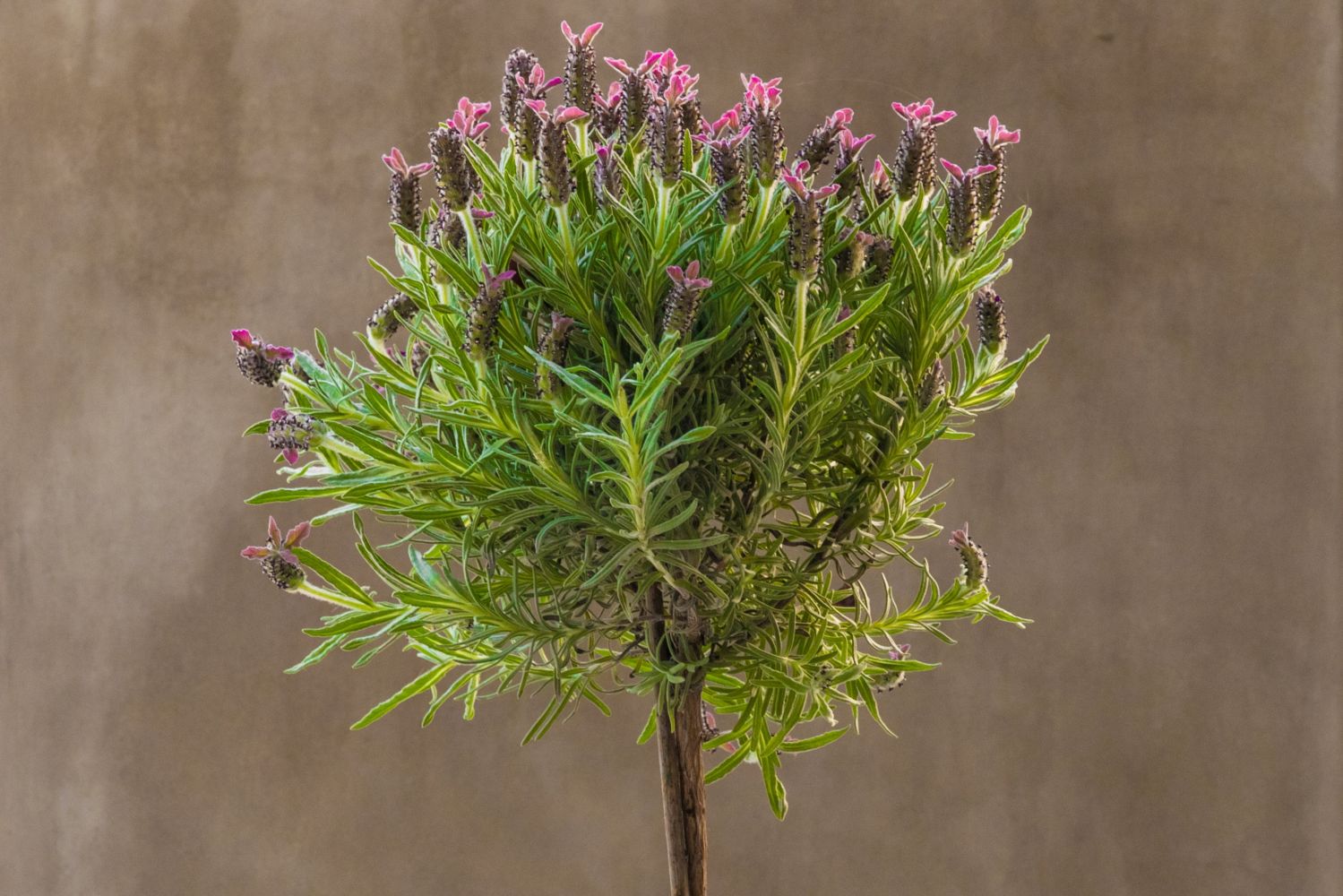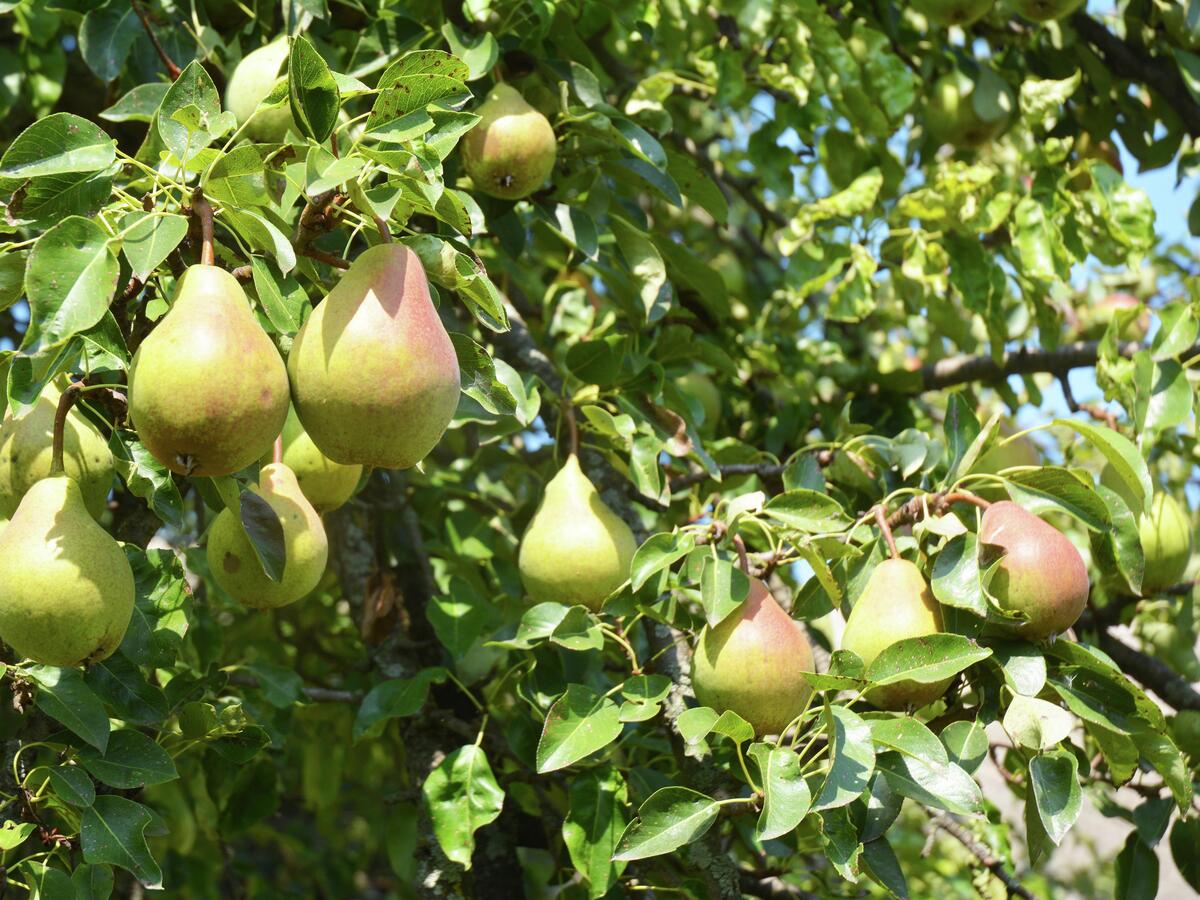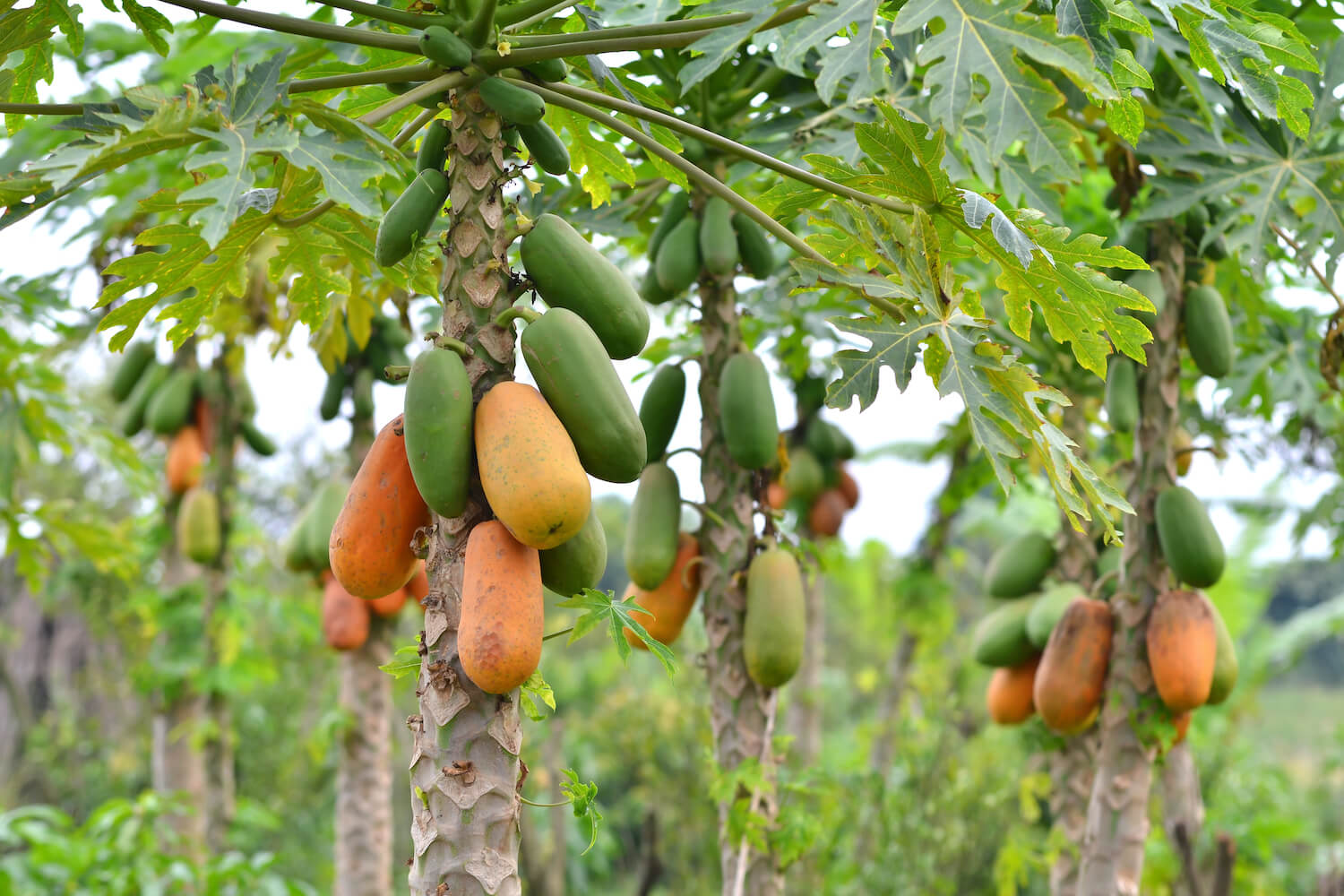Home>Gardening News and Trends>Latest News>How Big Do Mulberry Trees Get


Latest News
How Big Do Mulberry Trees Get
Published: November 2, 2023
Discover the latest news on mulberry trees and learn how big they can grow. Explore the growth patterns and find out the ideal conditions for cultivating these trees.
(Many of the links in this article redirect to a specific reviewed product. Your purchase of these products through affiliate links helps to generate commission for Chicagolandgardening.com, at no extra cost. Learn more)
Table of Contents
Introduction
Welcome to the fascinating world of mulberry trees! Mulberry trees, scientifically known as Morus, are deciduous trees known for their mesmerizing beauty, delicious fruits, and multiple uses. These trees have a rich history, with origins tracing back to ancient China, and their cultivation has spread across the globe.
One of the common questions people have when it comes to mulberry trees is how big they can get. The size of a mulberry tree depends on various factors, including the specific variety, environmental conditions, and how they are cared for. Understanding the growth potential of mulberry trees is crucial for planning their placement in gardens, landscapes, or orchards. Whether you are a homeowner considering planting a mulberry tree or a landscaper looking to incorporate them into a design, knowing their potential size will help you make informed decisions.
This article aims to provide you with comprehensive information about the size of mulberry trees and the factors that influence their growth. We will explore the characteristics of mulberry trees, discuss the average height and spread of these trees, examine different varieties and their sizes, and provide tips on pruning and maintenance to control their size. So, let’s dive in and explore the fascinating world of mulberry trees and their magnificent growth!
Characteristics of Mulberry Trees
Mulberry trees are known for their unique characteristics that make them a beloved choice for homeowners, gardeners, and fruit enthusiasts alike. Here are some of the key features that define mulberry trees:
- Deciduous Nature: Mulberry trees belong to the deciduous category, meaning they shed their leaves during the fall and remain bare during the winter months. This characteristic makes them ideal for creating shade during the warmer seasons while allowing sunlight to filter through during the colder months.
- Alternate Leaves: The leaves of mulberry trees are typically alternate in arrangement along the branches. These leaves are usually heart-shaped or lobed and have a vibrant green color that adds to the overall beauty of the tree.
- Fruit Production: One of the distinctive features of mulberry trees is their ability to produce an abundance of fruits. These fruits, known as mulberries, come in a variety of colors, including black, red, and white. They are sweet and succulent, making them a popular choice for use in culinary delights like jams, pies, and desserts.
- Rapid Growth: Mulberry trees are known for their rapid growth, especially during their early years. With the right conditions and care, these trees can grow several feet each year, quickly establishing a lush and green canopy in your outdoor space.
- Sturdy Trunk and Branches: Mulberry trees have a sturdy trunk and well-branched structure that provides stability and strength. This characteristic allows them to withstand strong winds and other harsh weather conditions, making them suitable for various climates.
These characteristics, combined with the tree’s aesthetic appeal, make mulberry trees a popular choice for landscaping and gardening projects. Now that we understand the unique qualities of mulberry trees, let’s explore the factors that can influence their growth and size.
Factors Affecting the Growth of Mulberry Trees
Several factors can have a significant impact on the growth and size of mulberry trees. By understanding these factors, you can ensure optimal growth and development of your mulberry tree. Here are the key factors that influence the growth of mulberry trees:
- Climate: Mulberry trees are adaptable to a wide range of climates, but they tend to thrive in regions with moderate temperatures and adequate rainfall. Extreme cold or heat can limit their growth and affect fruit production. It is essential to choose a mulberry tree variety that is suitable for your specific climate.
- Soil Conditions: Mulberry trees prefer well-drained soil that is rich in organic matter. The soil should have a pH level ranging from slightly acidic to slightly alkaline. Poor soil quality or improper drainage can hinder the growth and health of the tree.
- Light Exposure: Mulberry trees require full sun to partial shade to thrive. They need at least 6-8 hours of direct sunlight each day for optimal growth and fruit production. Insufficient light can lead to weak growth and reduced fruiting.
- Watering: Adequate and consistent watering is crucial for the growth of mulberry trees, especially during the initial years. They prefer moist soil but can tolerate short periods of drought once established. Overwatering can lead to root rot, while underwatering can cause stress and hinder growth.
- Pruning: Regular pruning is essential for maintaining the size and shape of mulberry trees. Pruning helps to remove dead or diseased branches, promote air circulation, and encourage new growth. Improper pruning techniques can impact the overall health and growth of the tree.
- Pest and Disease Control: Mulberry trees can be susceptible to various pests and diseases, such as aphids, scale insects, powdery mildew, and leaf spots. Regular monitoring and appropriate pest and disease control measures are necessary to prevent damage and promote healthy growth.
By considering and addressing these factors, you can create the optimal conditions for your mulberry tree to thrive and reach its maximum growth potential. Now that we have explored the influencing factors, let’s move on to discussing the average height and spread of mulberry trees.
Average Height and Spread of Mulberry Trees
Mulberry trees have the potential to reach impressive heights and spreads, creating a majestic presence in any landscape. However, it’s essential to note that the size of a mulberry tree can vary depending on the specific variety and growing conditions. Here is a general overview of the average height and spread of mulberry trees:
The height of a mature mulberry tree typically ranges from 30 to 70 feet (9 to 21 meters). Some varieties, such as the White Mulberry (Morus alba), can grow as tall as 80 feet (24 meters). The growth rate of mulberry trees is relatively fast, especially during the first few years, and they can attain their maximum height within 10 to 15 years under optimal conditions. The trunk of a mature mulberry tree can reach a diameter of 3 to 4 feet (0.9 to 1.2 meters), adding to its sturdy and impressive appearance.
In terms of spread, mulberry trees can have a canopy that extends as wide as their height. The average spread of a mature mulberry tree ranges from 30 to 50 feet (9 to 15 meters). Some varieties, such as the Weeping Mulberry (Morus alba ‘Pendula’), have graceful, cascading branches that can extend even further.
It’s worth noting that mulberry trees have a sprawling growth habit, with branches spreading out in multiple directions. This wide and open growth pattern adds to their beauty and makes them excellent shade trees for large outdoor spaces.
However, it’s important to consider the available space when planting mulberry trees. Their large size may not be suitable for smaller yards or confined areas. It’s recommended to choose smaller varieties or consider regular pruning to control the size and maintain the desired shape.
Next, let’s explore different varieties of mulberry trees and their sizes, providing you with options to choose from based on the available space and desired outcome.
Varieties of Mulberry Trees and Their Sizes
The world of mulberry trees offers a wide variety of options, each with its distinct characteristics and size. If you have limited space or specific preferences, choosing the right variety is crucial. Here are some popular mulberry tree varieties and their average sizes:
- Black Mulberry (Morus nigra): The Black Mulberry is known for its delicious dark-colored fruits and is the smallest among the mulberry tree varieties. It typically grows up to 20 to 40 feet (6 to 12 meters) in height, making it an excellent option for smaller yards and spaces.
- Red Mulberry (Morus rubra): The Red Mulberry is a native North American species that showcases vibrant reddish-purple fruits. It grows slightly larger than the Black Mulberry, with an average height of 30 to 50 feet (9 to 15 meters) and a spread of 30 to 40 feet (9 to 12 meters).
- White Mulberry (Morus alba): The White Mulberry is a versatile variety and can adapt to various soil and climate conditions. It has different cultivars that vary in size, but on average, it grows to about 30 to 80 feet (9 to 24 meters) in height and has a spread of 20 to 60 feet (6 to 18 meters).
- Weeping Mulberry (Morus alba ‘Pendula’): The Weeping Mulberry is a unique and visually stunning variety that features cascading branches. It typically reaches a height of 10 to 15 feet (3 to 4.5 meters) and has a spread of 10 to 12 feet (3 to 3.5 meters). Its smaller size and graceful appearance make it an ideal choice for ornamental use or smaller gardens.
- Paper Mulberry (Broussonetia papyrifera): Although not a true mulberry, the Paper Mulberry is often included in discussions due to its similar appearance. It can reach a height of 30 to 50 feet (9 to 15 meters) and has a spread of 20 to 30 feet (6 to 9 meters). It produces unique fruit clusters and attractive foliage, making it a popular choice for landscaping projects.
These are just a few examples of mulberry tree varieties, and there are many more to explore. When selecting a mulberry tree for your space, consider the expected height and spread of the variety you choose. You can also consult with a local nursery or horticulture expert to determine the best options based on your specific needs and growing conditions.
Now that we have explored the variety of mulberry tree sizes, let’s move on to discussing how pruning and trimming can be used to control the size of mulberry trees.
Pruning and Trimming Mulberry Trees to Control Size
Pruning and trimming are essential practices to maintain the size and shape of mulberry trees. By implementing proper pruning techniques, you can effectively control the growth and prevent the tree from becoming too large for its intended space. Here are some tips for pruning and trimming mulberry trees:
- Timing: It is best to prune mulberry trees during their dormant season, which is typically in late winter or early spring before the new growth begins. Pruning during this time ensures that the tree has ample time to heal and recover before the growing season.
- Size Reduction: To control the size of the mulberry tree, focus on selective pruning to reduce the length of branches. Identify and trim back any long or overgrown branches, ensuring to make clean cuts just above a healthy bud or branch junction.
- Thinning Out: Thinning out the canopy by removing crowded or crossing branches helps improve air circulation and light penetration. This process reduces the density of the foliage, preventing the tree from becoming too dense and overpowering the space.
- Height Control: If the height of the mulberry tree needs to be reduced, prune the uppermost branches back to a lateral branch or lateral bud. This will encourage lateral growth and help maintain a more manageable height.
- Remove Suckers: Mulberry trees tend to produce suckers, which are shoots that emerge from the base of the tree or from the roots. These suckers can divert energy and resources from the main tree and contribute to its rapid growth. It is important to remove suckers regularly to prevent them from taking over and causing size-related issues.
- Professional Help: If you are unsure about pruning techniques or if your mulberry tree has grown significantly and requires extensive pruning, consider consulting a professional arborist or tree care specialist. They have the expertise and tools to effectively prune and trim the tree while ensuring its overall health and longevity.
Remember that pruning should be done judiciously, as excessive or improper pruning can harm the tree and impact its growth. Always use clean and sharp pruning tools to make precise cuts, and avoid removing more than one-third of the tree’s foliage in a single pruning session.
By regularly pruning and trimming mulberry trees, you can effectively control their size and shape, creating a well-maintained and aesthetically pleasing appearance in your outdoor space.
Next, let us explore some essential tips for maintaining the overall health and vitality of mulberry trees.
Tips for Maintaining Healthy Mulberry Trees
To ensure the health and vitality of your mulberry trees, it’s important to follow proper care and maintenance guidelines. Here are some essential tips to keep your mulberry trees in optimal condition:
- Provide Adequate Water: Mulberry trees require regular watering, especially during dry periods. Ensure that the soil around the tree remains consistently moist, but avoid overwatering, as excessive moisture can lead to root rot. A layer of organic mulch around the base of the tree can help retain moisture in the soil.
- Fertilize Appropriately: Mulberry trees benefit from regular fertilization to ensure proper growth and fruit production. Apply a balanced, slow-release fertilizer in early spring, following the manufacturer’s instructions. Avoid over-fertilization, as it can contribute to excessive growth and weaken the tree’s overall health.
- Prune Regularly: As discussed earlier, regular pruning helps maintain the size and shape of the mulberry tree. Additionally, it helps remove dead or diseased branches and promotes better air circulation within the canopy, reducing the risk of fungal infections or pest infestations.
- Monitor for Pests and Diseases: Regularly inspect your mulberry tree for signs of pests, such as aphids or scale insects, as well as common diseases like powdery mildew or leaf spots. If detected, take appropriate measures to control and eliminate the pests or diseases promptly.
- Protect from Extreme Temperatures: Mulberry trees can be sensitive to extreme cold or heat. During frigid winters, protect the base of the tree with a layer of mulch or a burlap wrap to insulate the roots. In hot summers, provide shade or use sunscreens to prevent sunburn on the trunk and branches.
- Regularly Remove Fallen Fruits and Debris: Fallen mulberries and other debris can attract pests and harbor diseases. Regularly clean up fallen fruits, leaves, and other debris around the tree to maintain a clean and healthy growing environment.
- Monitor and Adjust Supporting Structures: If you have young or newly planted mulberry trees, regularly check and adjust any supporting stakes or ties. Ensure that they provide adequate support without causing any damage or constriction to the growing trunk or branches.
- Stay Vigilant with Weed Control: Keep the area around the mulberry tree free from weeds and invasive plants that can compete for nutrients and water. Regularly remove and control weeds to reduce competition and promote the healthy growth of the tree.
By following these tips and providing the necessary care, you can maintain the overall health and vigor of your mulberry trees, ensuring their longevity and continued beauty in your outdoor landscape.
Now that we have explored the maintenance tips, let’s wrap up our discussion on mulberry trees.
Conclusion
Mulberry trees are truly remarkable additions to any landscape or garden. With their stunning appearance, delicious fruits, and multiple uses, these trees capture the attention and admiration of many. Understanding the potential size and growth of mulberry trees is crucial for proper planning, ensuring they fit well in their designated space.
Throughout this article, we have explored the characteristics of mulberry trees, including their deciduous nature, alternate leaves, fruit production, rapid growth, and sturdy trunk and branches. We have also discussed the various factors that can influence their growth, such as climate, soil conditions, light exposure, watering, pruning, and pest control.
When it comes to size, mulberry trees have the potential to grow to impressive heights and spreads. The average height ranges from 30 to 70 feet, with certain varieties reaching up to 80 feet. Their spreads can reach up to 50 feet, and in the case of the Weeping Mulberry variety, even further.
Furthermore, we have explored different mulberry tree varieties and their sizes, providing options for various spaces and preferences. From the small-sized Black Mulberry to the cascading branches of the Weeping Mulberry, there is a variety to suit every need.
To control the size of mulberry trees, pruning and trimming techniques can be employed. By selectively pruning and thinning out the canopy, you can maintain the desired size and shape of the tree while promoting healthier growth and enhancing its overall appearance.
Lastly, we have discussed essential tips for maintaining healthy mulberry trees, such as providing adequate water, appropriate fertilization, regular pruning, monitoring for pests and diseases, protecting from extreme temperatures, and maintaining a clean growing environment.
With these guidelines and proper care, you can enjoy the beauty and benefits of mulberry trees for years to come. Whether you have a large garden or a small outdoor space, there is a mulberry tree variety that can fit your needs and provide an enchanting addition to your environment.
So go ahead, plant a mulberry tree, and enjoy watching it thrive and grow while delighting you with its vibrant foliage, delicious fruits, and the joy it brings to the surrounding ecosystem. Happy growing!










